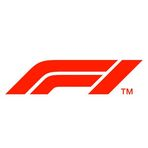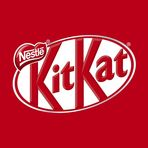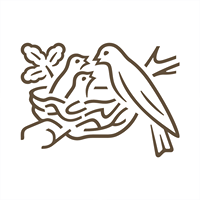KitKat Takes the Fast Lane: A Sweet Shift in Marketing Strategy
November 12, 2024, 9:55 am
Nestlé's KitKat is revving up its marketing engine. The iconic chocolate brand has signed a global sponsorship deal with Formula 1, marking a significant shift in its approach. This move comes under the leadership of new CEO Laurent Freixe, who aims to broaden the brand's appeal, particularly among younger consumers.
The deal, which spans from late 2025 to 2028, is a bold step for Nestlé. Historically, the company has relied on localized marketing strategies. Now, it’s going global. This sponsorship will kick off in Mexico and Brazil, where KitKat will be prominently featured at racetracks and pit lanes. Expect to see KitKat branding on chocolate wrappers and a flurry of promotional events. The brand plans to give away hundreds of race tickets, creating a buzz that could attract a younger audience.
Freixe's vision is clear. He wants to transform KitKat into a household name for shoppers under 30. This demographic is crucial. They are the future consumers, and capturing their attention is like catching lightning in a bottle. By aligning with the high-octane world of Formula 1, KitKat is positioning itself as more than just a snack; it’s becoming part of a lifestyle.
The sponsorship deal is not just about visibility. It’s a strategic pivot. KitKat's global marketing budget has surged nearly 20% this year. This increase is a response to the challenges faced during the pandemic. Under former CEO Mark Schneider, Nestlé cut back on marketing to save costs. The repercussions of that decision are still felt today. Sales volumes dipped, and competitors seized the opportunity to grab market share.
Freixe's arrival in September has ushered in a new era. He is a strong advocate for investing in core brands. The KitKat deal is a testament to this philosophy. It signals a commitment to growth and innovation. This investment is not just a flash in the pan; it’s a long-term strategy to reinvigorate the brand.
KitKat is a heavyweight in Nestlé’s portfolio, valued at over 2 billion Swiss francs. Yet, it lags behind some of the company’s other giants like Nescafé and pet care products. The brand’s marketing spend is now outpacing Nestlé’s overall increase in advertising expenses. In 2023, the company reported that marketing costs were 7.7% of sales, a slight uptick from the previous year. KitKat’s aggressive marketing strategy is a clear signal that it intends to reclaim its place at the forefront of consumer consciousness.
The Formula 1 partnership is not without precedent. Other luxury brands, like LVMH, have also recognized the allure of this high-speed sport. Their recent sponsorship deal with Formula 1 underscores the growing trend of brands seeking to align with premium experiences. It’s a race to capture the hearts and minds of consumers, and KitKat is determined to stay in the running.
This shift in strategy is a gamble. But in the world of marketing, fortune favors the bold. KitKat’s move into the fast lane could pay off handsomely. By tapping into the excitement of Formula 1, the brand is not just selling chocolate; it’s selling an experience. It’s about the thrill of the race, the camaraderie of fans, and the joy of indulgence.
As the world emerges from the shadows of the pandemic, consumers are eager for experiences that excite and engage. KitKat’s partnership with Formula 1 is a masterstroke in this context. It’s a way to connect with a generation that craves authenticity and adventure.
Freixe’s leadership is already making waves. His focus on core brands and willingness to invest in marketing is a refreshing change. The previous strategy of cutting back has proven detrimental. Now, with a clear vision and a bold plan, KitKat is poised for a comeback.
In conclusion, KitKat’s global sponsorship deal with Formula 1 is more than just a marketing strategy. It’s a declaration of intent. The brand is ready to embrace change and reach new heights. By appealing to younger consumers and aligning with a sport that embodies speed and excitement, KitKat is not just a chocolate bar; it’s a ticket to a thrilling experience. The race is on, and KitKat is in the driver’s seat.
The deal, which spans from late 2025 to 2028, is a bold step for Nestlé. Historically, the company has relied on localized marketing strategies. Now, it’s going global. This sponsorship will kick off in Mexico and Brazil, where KitKat will be prominently featured at racetracks and pit lanes. Expect to see KitKat branding on chocolate wrappers and a flurry of promotional events. The brand plans to give away hundreds of race tickets, creating a buzz that could attract a younger audience.
Freixe's vision is clear. He wants to transform KitKat into a household name for shoppers under 30. This demographic is crucial. They are the future consumers, and capturing their attention is like catching lightning in a bottle. By aligning with the high-octane world of Formula 1, KitKat is positioning itself as more than just a snack; it’s becoming part of a lifestyle.
The sponsorship deal is not just about visibility. It’s a strategic pivot. KitKat's global marketing budget has surged nearly 20% this year. This increase is a response to the challenges faced during the pandemic. Under former CEO Mark Schneider, Nestlé cut back on marketing to save costs. The repercussions of that decision are still felt today. Sales volumes dipped, and competitors seized the opportunity to grab market share.
Freixe's arrival in September has ushered in a new era. He is a strong advocate for investing in core brands. The KitKat deal is a testament to this philosophy. It signals a commitment to growth and innovation. This investment is not just a flash in the pan; it’s a long-term strategy to reinvigorate the brand.
KitKat is a heavyweight in Nestlé’s portfolio, valued at over 2 billion Swiss francs. Yet, it lags behind some of the company’s other giants like Nescafé and pet care products. The brand’s marketing spend is now outpacing Nestlé’s overall increase in advertising expenses. In 2023, the company reported that marketing costs were 7.7% of sales, a slight uptick from the previous year. KitKat’s aggressive marketing strategy is a clear signal that it intends to reclaim its place at the forefront of consumer consciousness.
The Formula 1 partnership is not without precedent. Other luxury brands, like LVMH, have also recognized the allure of this high-speed sport. Their recent sponsorship deal with Formula 1 underscores the growing trend of brands seeking to align with premium experiences. It’s a race to capture the hearts and minds of consumers, and KitKat is determined to stay in the running.
This shift in strategy is a gamble. But in the world of marketing, fortune favors the bold. KitKat’s move into the fast lane could pay off handsomely. By tapping into the excitement of Formula 1, the brand is not just selling chocolate; it’s selling an experience. It’s about the thrill of the race, the camaraderie of fans, and the joy of indulgence.
As the world emerges from the shadows of the pandemic, consumers are eager for experiences that excite and engage. KitKat’s partnership with Formula 1 is a masterstroke in this context. It’s a way to connect with a generation that craves authenticity and adventure.
Freixe’s leadership is already making waves. His focus on core brands and willingness to invest in marketing is a refreshing change. The previous strategy of cutting back has proven detrimental. Now, with a clear vision and a bold plan, KitKat is poised for a comeback.
In conclusion, KitKat’s global sponsorship deal with Formula 1 is more than just a marketing strategy. It’s a declaration of intent. The brand is ready to embrace change and reach new heights. By appealing to younger consumers and aligning with a sport that embodies speed and excitement, KitKat is not just a chocolate bar; it’s a ticket to a thrilling experience. The race is on, and KitKat is in the driver’s seat.


